Our Blog

When to call a vet
What Every Owner Should Know—When to Call the Vet vs. Treating at Home
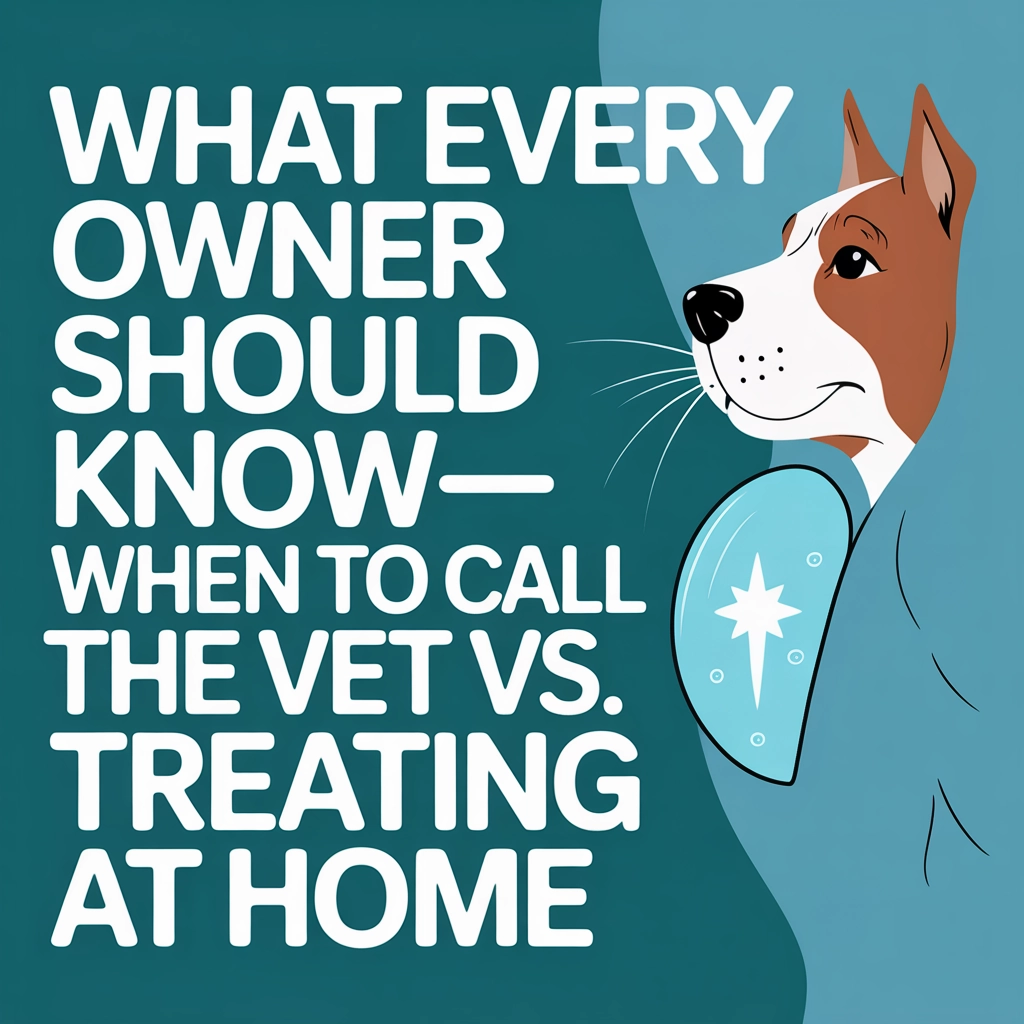
The Pet Owner's Dilemma
As dog owners, we've all been there—staring at our furry friend who just vomited, has a small cut, or is limping slightly, and wondering: "Is this something I can handle at home, or do we need to head to the vet right away?"
It's a common dilemma that balances our pet's wellbeing with practical considerations like time, stress, and finances. Making the wrong call either way has consequences—unnecessary vet visits can stress your dog and your wallet, while delaying necessary care could put your pet at risk.
This guide will help you navigate that crucial decision-making process with confidence, providing clear guidelines on when to treat at home and when to seek professional veterinary care.
Minor Issues You Can Typically Treat at Home
Many common dog issues can be safely managed at home with basic first aid knowledge and supplies. Here are situations where home care is often appropriate:
1. Superficial Wounds and Scrapes
Small cuts, minor scrapes, or superficial wounds that aren't bleeding heavily can usually be treated at home:
Clean the area with warm water or a pet-safe antiseptic solution (never use hydrogen peroxide on deep wounds)
Remove any visible debris gently with clean tweezers
Apply a thin layer of pet-safe antibacterial ointment
Monitor the wound for signs of infection (increasing redness, swelling, discharge, or pain)
2. Single Episodes of Vomiting or Diarrhea
If your dog vomits once or has a single episode of loose stool but otherwise seems normal:
Withhold food (not water) for 12 hours to rest the digestive system
Gradually reintroduce bland food like boiled chicken and plain white rice
Return to normal diet slowly over 2-3 days if symptoms don't return
3. Minor Paw Issues
For minor paw problems:
Gently remove small splinters or thorns with tweezers
Rinse paws after walks if your dog stepped in something irritating
Apply paw wax or booties in extreme weather conditions
For minor pad abrasions, clean and monitor for healing
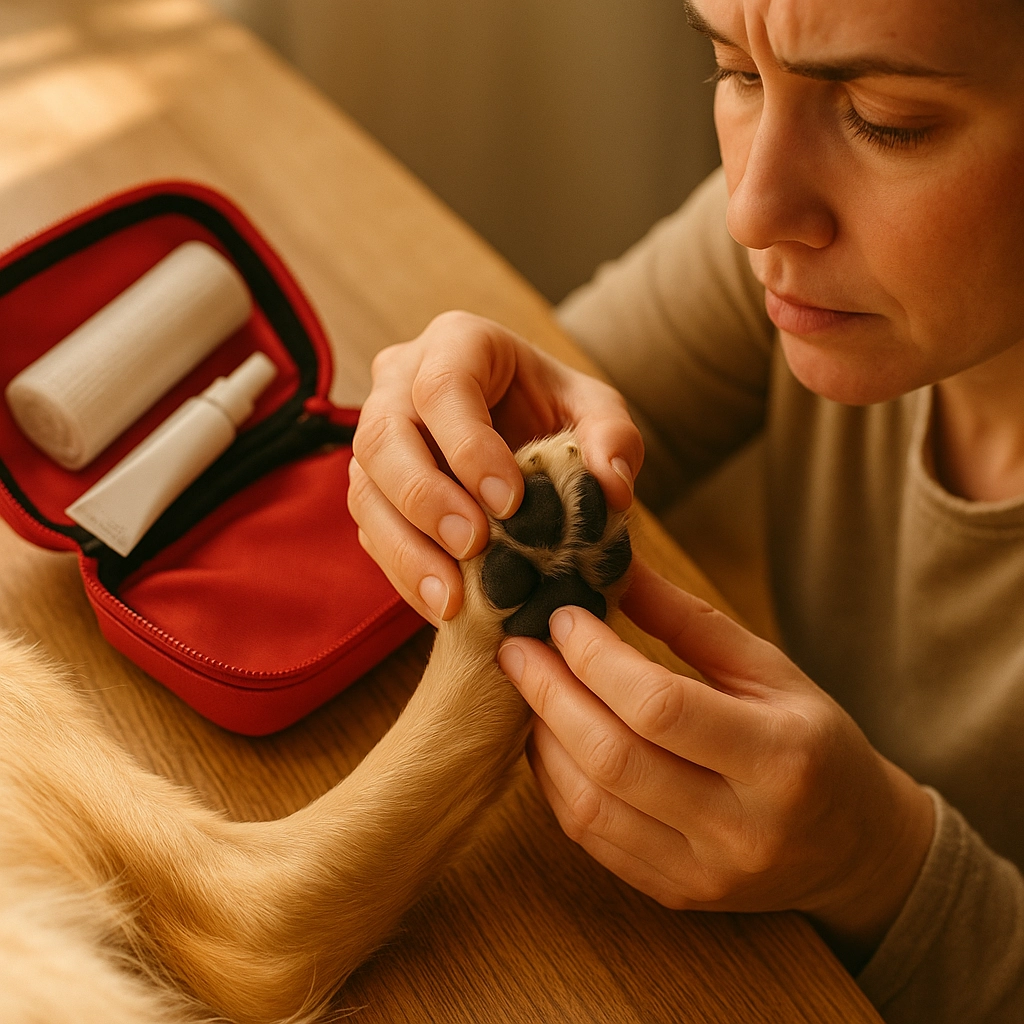
4. Mild Allergic Reactions
If your dog has mild itching or hives without breathing difficulties:
Give an appropriate dose of pet-safe antihistamine (consult your vet beforehand for the correct dosage based on your dog's weight)
Apply cool compresses to itchy areas
Use an oatmeal bath for widespread itching
Monitor closely for any worsening symptoms
5. Minor Limping
For mild limping with no visible injury:
Rest your dog for 24-48 hours (leash walks only for toileting)
Apply ice packs wrapped in a towel for 10-15 minutes several times daily
Prevent jumping, running, or climbing stairs
If no improvement after 48 hours, contact your vet
When to Call the Vet Immediately
Some situations require prompt professional veterinary attention. Never delay in these scenarios:
1. Severe Trauma
Any significant impact (hit by car, fall from height)
Deep wounds or punctures
Suspected broken bones or dislocations
Head trauma or eye injuries
Significant bleeding that doesn't stop with gentle pressure after 5 minutes
2. Respiratory Distress
Labored breathing or wheezing
Choking or gagging
Blue or pale gums
Excessive panting that doesn't resolve with rest
Open-mouth breathing in breeds not prone to panting
3. Digestive Emergencies
Repeated vomiting (more than 2-3 times in 24 hours)
Diarrhoea lasting more than 24 hours
Blood in vomit or stool
Suspected ingestion of toxic substances
Unproductive retching or attempts to vomit (especially in deep-chested breeds—could indicate bloat, which is life-threatening)
Significantly distended abdomen
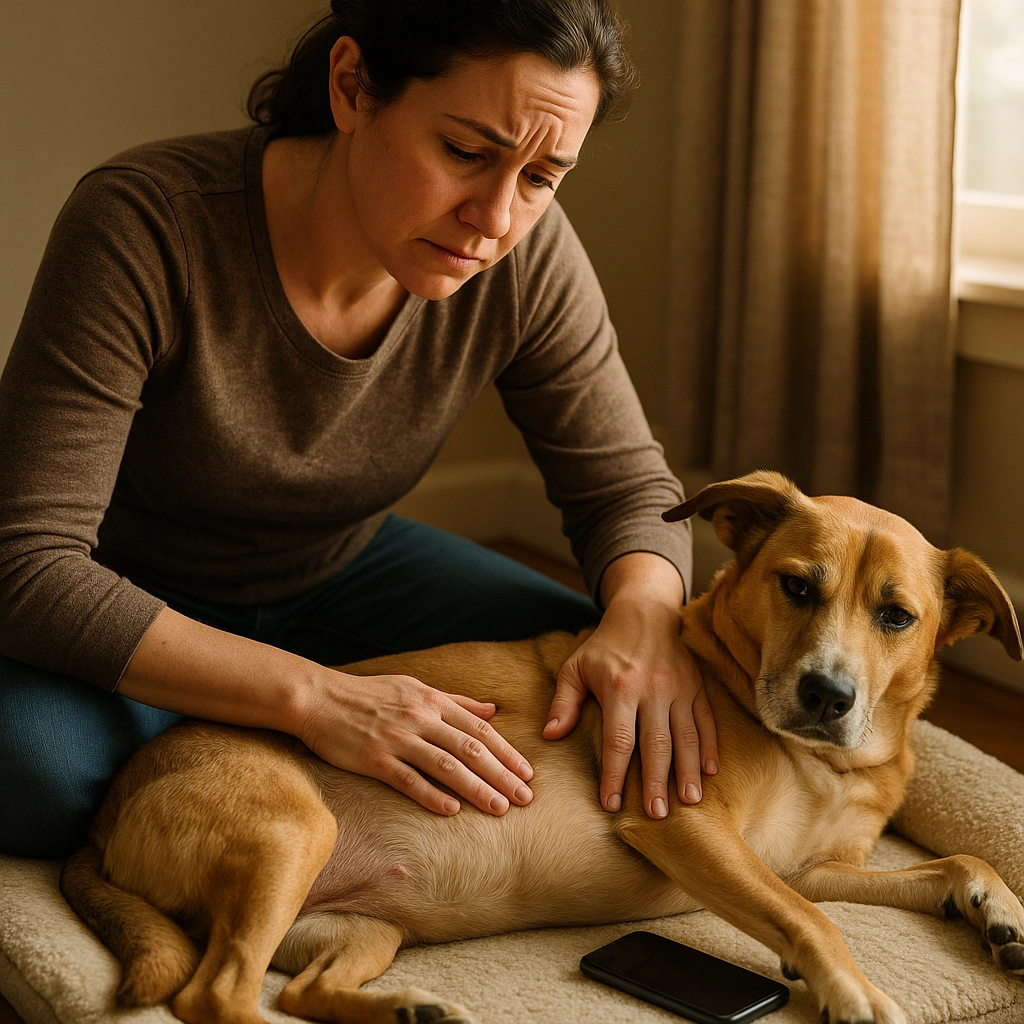
4. Neurological Signs
Seizures of any kind
Loss of balance or coordination
Head tilting
Collapse or fainting
Disorientation or confusion
5. Urinary Issues
Straining to urinate with little or no output
Blood in urine
Inability to urinate (especially in male dogs)
Excessive urination or drinking
The Grey Areas: When Decision-Making Gets Tricky
Some situations fall into a grey area where your judgment is crucial:
1. Low Energy or Appetite
If your dog is less active than usual or skips a meal but otherwise seems normal, monitor them closely for 24 hours. Watch for:
Additional symptoms developing
Worsening lethargy
Complete refusal of favorite treats
Behavioral changes
If any of these occur or low energy persists beyond 24 hours, contact your vet.
2. Mild Ongoing Symptoms
Symptoms that are mild but persistent deserve attention:
Occasional coughing that lasts more than three days
Intermittent limping that comes and goes
Itching or scratching that continues despite home treatment
Changes in water consumption or urination patterns
3. Senior Dogs With Subtle Changes
Older dogs often show subtle signs of illness:
Slight changes in routine or habits
Minimal reduction in appetite
Slower on walks
Increased sleep
Mild confusion
For senior dogs, it's often better to err on the side of caution and consult your vet about these changes, as they may indicate underlying issues.
Your Emergency Preparation Toolkit
Being prepared for emergencies will help you make better decisions when they occur:
1. Have a Well-Stocked First Aid Kit
Your dog first aid kit should include:
Gauze pads and rolls
Non-stick bandages
Adhesive medical tape
Blunt-ended scissors
Digital thermometer
Tweezers
Antiseptic wipes
Sterile saline solution
Instant cold pack
Disposable gloves
Muzzle (even friendly dogs may bite when in pain)
2. Keep Emergency Contacts Accessible
Save these numbers in your phone and post them visibly in your home:
Your regular veterinarian
Nearest 24-hour emergency vet clinic
Pet poison helpline
A friend or family member who can help in emergencies
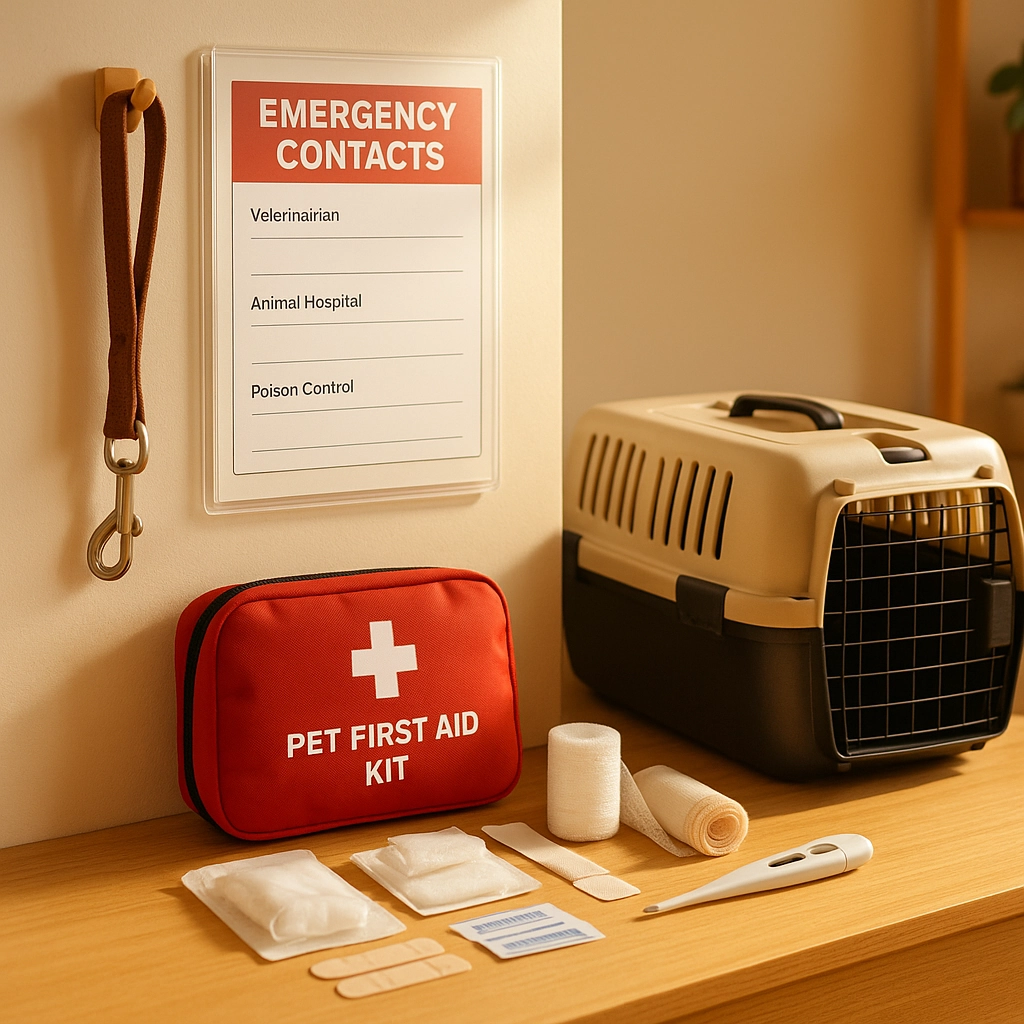
3. Know Your Dog's Vital Signs
Familiarize yourself with your dog's normal:
Resting respiratory rate (breaths per minute)
Heart rate
Gum color
Temperature
Energy level
This baseline knowledge helps you recognize when something is truly abnormal.
Making the Call: A Decision Framework
When faced with a concerning situation, ask yourself these questions:
Is this potentially life-threatening? (Breathing problems, severe bleeding, toxin ingestion, inability to stand)
If YES: Seek emergency veterinary care immediately
Is my dog in significant pain? (Crying out, whimpering, extremely restless, aggressive when touched)
If YES: Contact your vet right away
Is this a new or worsening symptom in a senior dog or one with existing health conditions?
If YES: Err on the side of caution and call your vet
Has a mild symptom persisted for more than 24-48 hours despite home care?
If YES: Time to consult the professionals
Am I feeling significantly worried or unsure?
If YES: Trust your instincts—you know your dog best. When in doubt, at least call your vet for advice
Remember that a phone call to your veterinarian is always an option before deciding to visit. Many vets are willing to help you determine whether an in-person examination is necessary.
Prevention: The Best Medicine
The best way to avoid the "vet or home care" dilemma is to prevent problems before they start:
Keep up with regular wellness exams and vaccinations
Maintain proper weight and regular exercise
Feed a high-quality diet appropriate for your dog's age and health status
Practice good dental hygiene
Use appropriate parasite prevention
Dog-proof your home against common hazards
Learn to perform regular at-home health checks
When You're Ready to Learn More
Understanding the basics of dog first aid can save your pet's life and help you make better decisions about when professional care is needed. It empowers you to take appropriate action while waiting for veterinary care in emergencies and handle minor issues confidently at home.
Summer Special: Become a Confident Pet Parent! For a limited time, our comprehensive Dog First Aid course is available for just £19! This course covers all the essentials of emergency care, wound management, CPR, and clear guidelines on when to seek professional help.
Don't wait for an emergency to wish you had the knowledge to help your furry family member. Visit our courses page today to take advantage of this special summer offer and gain skills that could save your dog's life!
Remember—being prepared isn't about replacing veterinary care, but about knowing when it's needed and providing the best possible interim care when emergencies happen. Your dog counts on you to make the right call!
Your learning Journey - train in Dog First Aid
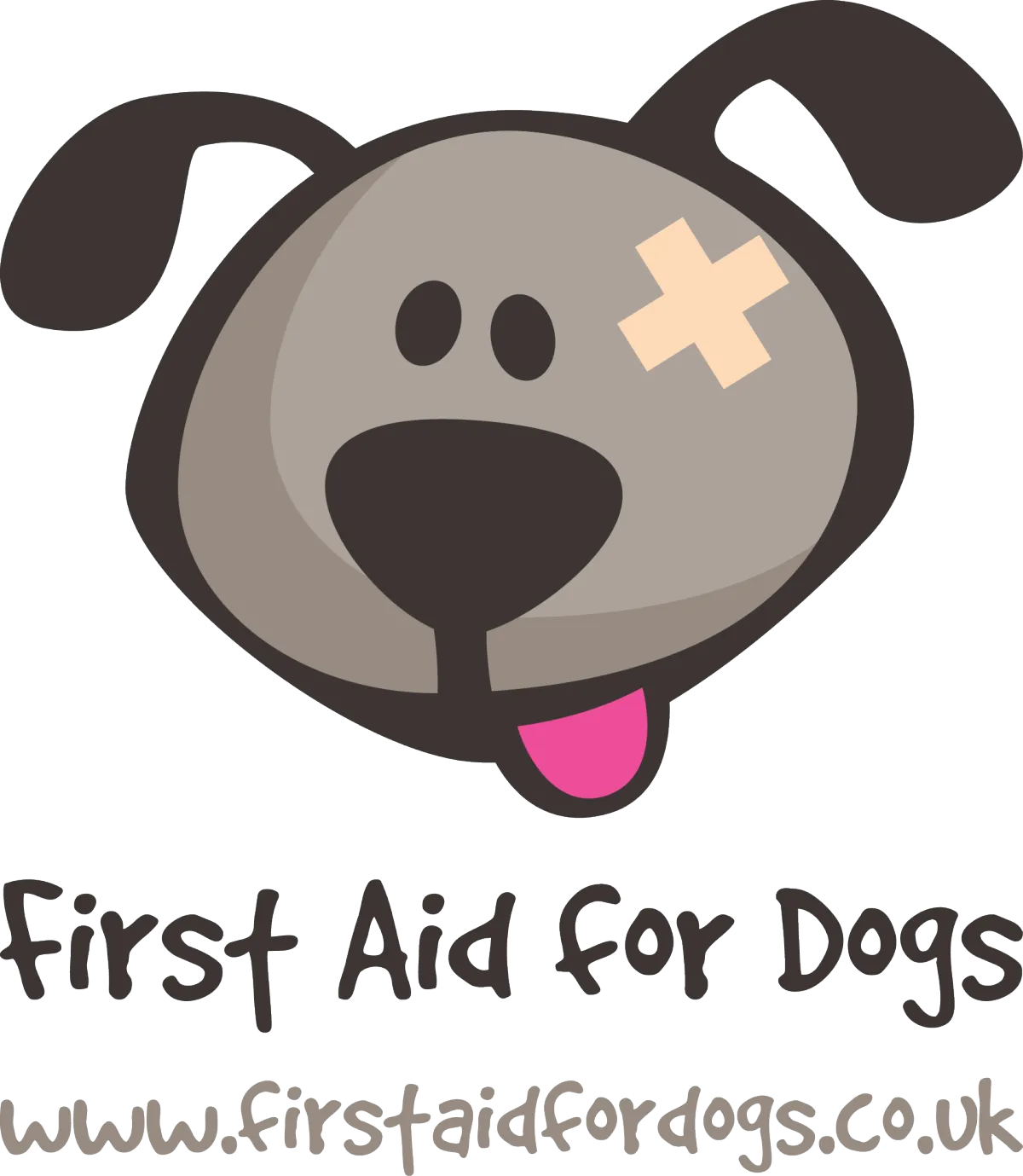
We’re dedicated to helping you protect and care for your dog with confidence. Thank you for trusting us to be part of your journey. Stay connected for tips, training updates, and more!
Quick Links
Resources
Connect With Us
© First Aid for Dogs 2025. 2025. All Rights Reserved.
